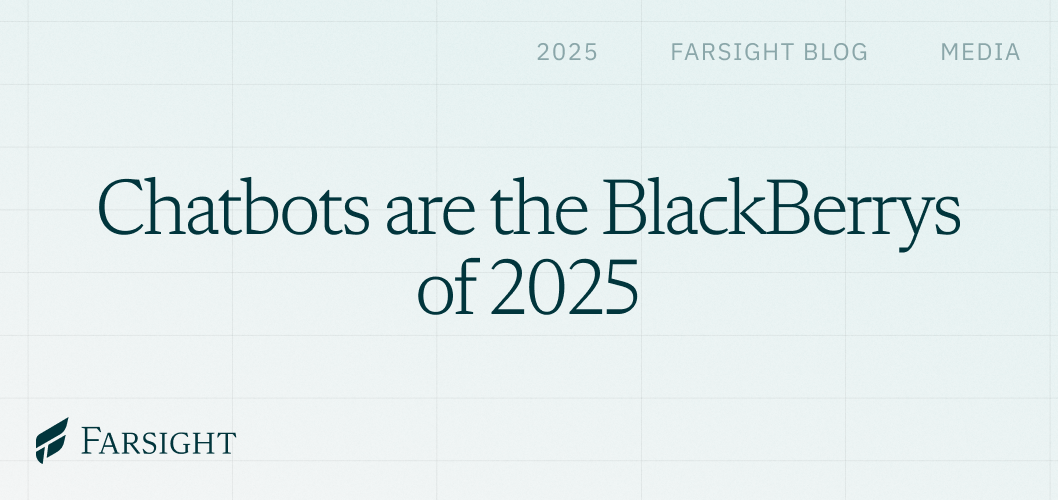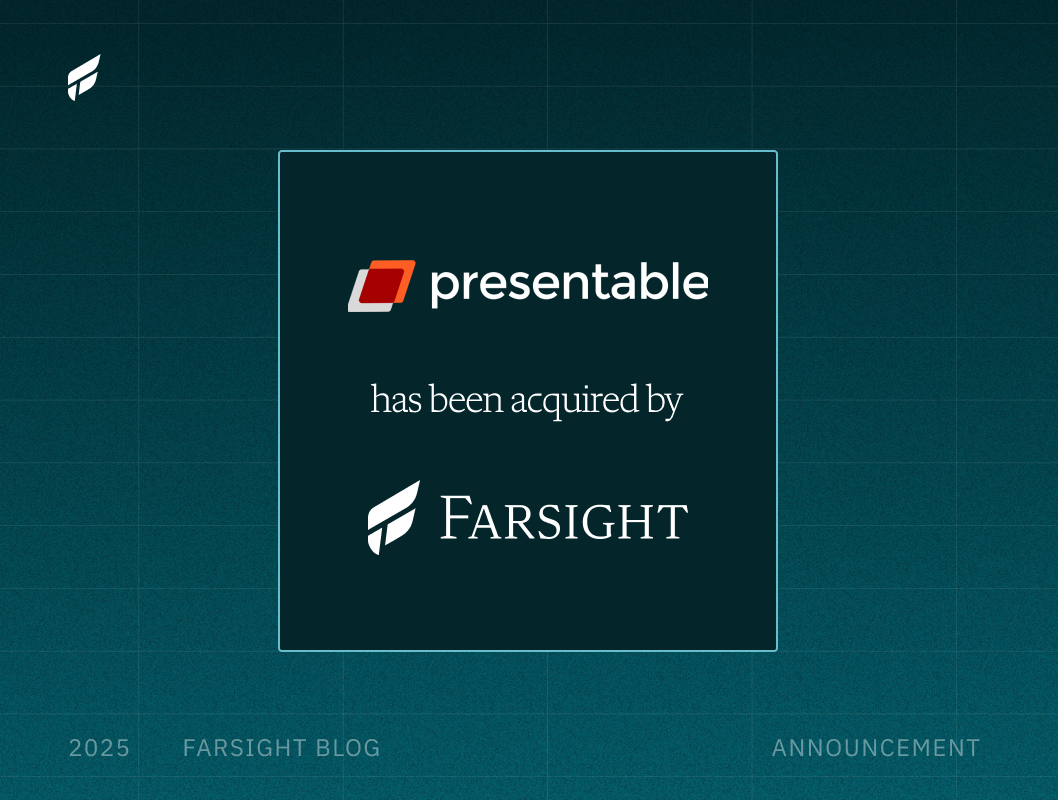By Samir Dutta, CEO of Farsight
Every era in tech has its icons, its defining symbols. In 2025, being chat-first in AI is starting to look a lot like being BlackBerry-first in 2007. Just as BlackBerry’s once-revolutionary keyboards became a liability when Apple ensured touchscreens took over, today’s chat-based AI platforms are rapidly becoming a relic of a bygone age.
Not even 15 years ago, BlackBerry was the biggest thing in tech. When the iPhone launched in 2007, BlackBerry dismissed it as a toy, doubling down on its strengths. And no matter how they tried to reposition themselves, the iPhone was simply capable of achieving more in a business environment that was becoming increasingly complex. By 2012, BlackBerry’s dominance had evaporated, its market share collapsed from over 50% to single digits. In the end, the BlackBerry was a step forward in business technology—the iPhone was a quantum leap.
Today’s chat-first AI companies are repeating this pattern. Chatbots made AI accessible and intuitive, sparking a revolution in digital interaction. But just as smartphones needed more than keyboards, modern enterprises need more than text-based chat.
As someone who has spent years building AI systems for Wall Street’s most demanding firms, I’ve seen this shift firsthand. The same leaders that once clung to their BlackBerrys are today realizing that chatbots—while innovative—can’t keep pace with today’s multimodal business needs.
The Multimodal Imperative
In today’s business environment, especially within finance, most critical tasks extend far beyond the capabilities of a simple chat interface. Analysts routinely sift through hundreds of pages of documents, extract data from charts and tables, cross-reference regulatory filings, and build complex financial models—all while maintaining strict accuracy and audit trails. Chatbots, while useful for straightforward queries, struggle to support these multifaceted workflows. As a result, organizations are increasingly looking for ways to process and interpret information across different formats, integrate with existing tools, and handle complex tasks autonomously.
While chatbots still serve a purpose for basic interactions, their limitations are prompting organizations to rethink how they deploy AI. Like the BlackBerry, chatbots are a stepping stone to a better technological breakthrough. Moving toward more advanced systems is a sign that businesses are evolving, finding new ways to use technology to keep up with growing and more complicated challenges.
Adapt or Be Left Behind
BlackBerry’s downfall wasn’t due to bad technology—it was a failure to keep up. Despite leading hardware and security, it couldn’t pivot when the market demanded something new.
Today’s AI leaders face the same challenge. The market now expects multimodal intelligence, autonomous execution, and enterprise-grade reliability. Recent surveys show that generative AI adoption has surged—91% of middle market companies now use AI, with one-quarter fully integrating it into core workflows. Among investment banking firms, boutique and middle-market players are leading the way in deploying AI for complex tasks such as deal sourcing and execution, moving beyond chatbot experiments.
The Enterprise Imperative
This shift isn’t just about technology—it’s about business transformation. Chat interfaces keep humans in the loop for every decision, creating bottlenecks. Autonomous workflow agents eliminate these bottlenecks, allowing firms to process more deals, analyze more data, and serve more clients without increasing headcount.
In regulated industries like finance, accuracy and compliance are non-negotiable. Modern AI systems provide auditable reasoning, source citations, and confidence scores, integrating with existing compliance frameworks and security standards.
The lesson from BlackBerry isn’t that keyboards were bad—it’s that the world moved on. Chat interfaces aren’t flawed, but they’re just one part of a rapidly expanding AI ecosystem. The companies that will dominate the next phase of AI are investing in autonomous agents that handle complex, multi-step workflows. They’re focusing on outcomes, not conversations.
The BlackBerry era lasted about five years. The chatbot era might not last half that long. The question isn’t whether your business will need to adapt—it’s whether you’ll do it fast enough to stay competitive.

.png)

